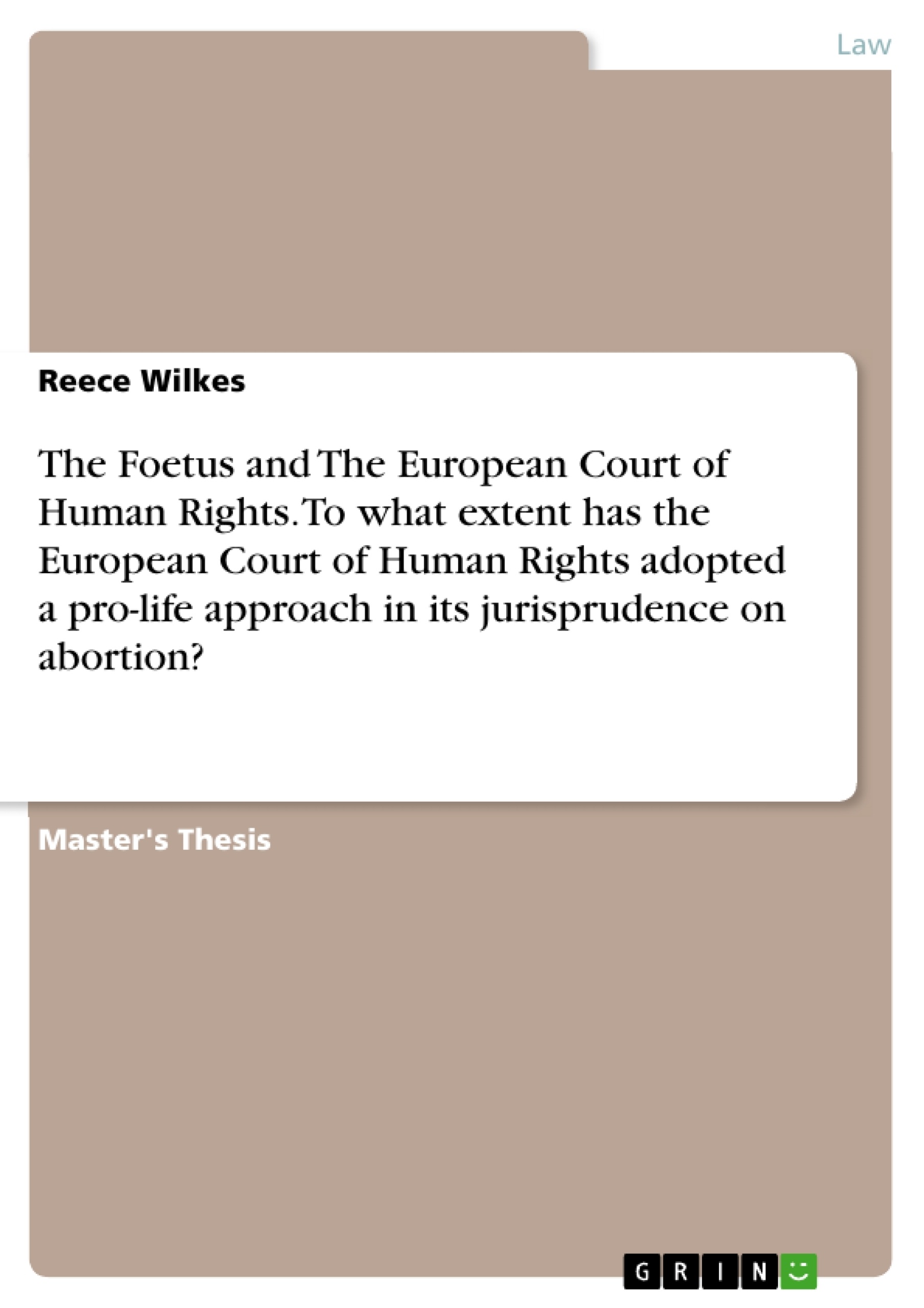The issue of abortion has always remained a taboo, not only socially but many legal systems have different attitudes towards it. With the creation of the European Convention on Human Rights and a Court of last resort to deal with alleged breaches by the State came the expectation that it had to deal with this pertinent issue due to States refusing to legalise abortion or limiting access to it.
This paper considers the extent to which the Courts jurisprudence has adopted a pro-life approach and if so, why. The paper reveals that there are competing interests, namely between three parties: The foetus, the woman and the State and that the Court has had to balance its judgements carefully, depending on the circumstances of each case, without intruding on a woman’s right to privacy under Art 8. It concludes that the Court has tried to stay as neutral as possible when dealing with cases on abortion, presumably understanding the contentions that would be raised if it is overly eager to appease one party over the other. This necessitates a new legal theory which is necessary due to the competing interests of each party over the other.
Contained within the paper, a new legal theory named "The Triad of Rights" is created which shows how women’s rights, foetal rights and State rights are unable to be dissociated from each other on the issue of abortion, indicating why the Court tries to stay as neutral as possible.
Inhaltsverzeichnis (Table of Contents)
- Chapter 1: Introduction
- 1.0 - Issues to be addressed and scope of research..
- 1.1 What are foetal rights?
- 1.2 What is Abortion?
- 1.3 What does pro-life mean?
- 1.4 What does pro-choice mean?
- Chapter 2: The European Convention On Human Rights
- 2.0 The European Convention on Human Rights: Brief Overview.
- 2.1 European Court of Human Rights: Art 2 & Art 27 - A 'Battle of Foetal Life and Standing' .....
- 2.2 The Right to Life (Art 2): A Foetal Pro-Life Instrument for the ECHR?
- 2.3 The Right to an Abortion & Practice: Art 8, Pro-life or Pro-Choice?
- 2.4 Fathers Rights - A Pro-Life or Pro-choice Approach?
- Chapter 3: The European Court of Human Rights
- 3.0 A Court of Margins and Morals?
Zielsetzung und Themenschwerpunkte (Objectives and Key Themes)
This paper investigates the extent to which the European Court of Human Rights has adopted a pro-life approach to the issue of abortion. It examines the competing interests of the foetus, the woman, and the state, and how the Court has balanced its judgments within the context of European Convention on Human Rights, specifically Articles 2 and 8. The paper analyzes the Court’s jurisprudence on abortion, considering the arguments for and against pro-life and pro-choice perspectives, and explores whether the Court has granted legal rights to foetuses.
- The European Court of Human Rights and its jurisprudence on abortion
- Competing interests of the foetus, the woman, and the state
- The balance between pro-life and pro-choice perspectives
- The legal and moral implications of foetal rights
- The application of the European Convention on Human Rights, particularly Articles 2 and 8
Zusammenfassung der Kapitel (Chapter Summaries)
Chapter 1: Introduction
This chapter lays out the key issues and scope of the paper, focusing on the European Court of Human Rights’ approach to abortion and its implications for foetal rights. It delves into the complex relationship between pro-life and pro-choice perspectives, emphasizing the importance of women’s rights and self-determination. It further defines concepts such as foetal rights, abortion, and the pro-life and pro-choice stances.
Chapter 2: The European Convention On Human Rights
This chapter examines the European Convention on Human Rights and its relevance to the abortion debate. It explores the applicability of Articles 2 (Right to Life) and 8 (Right to Private and Family Life) to foetal rights and a woman’s right to choose. The chapter analyzes how these articles have been interpreted and applied by the European Court of Human Rights in various abortion cases.
Chapter 3: The European Court of Human Rights
This chapter delves into the role of the European Court of Human Rights in shaping the legal landscape surrounding abortion. It explores the court's approach to balancing competing interests and navigating complex ethical and moral questions. The chapter critically analyzes the court's jurisprudence in various cases, examining the potential for bias and the challenges of achieving neutrality in such sensitive matters.
Schlüsselwörter (Keywords)
The paper examines the European Court of Human Rights, abortion, foetal rights, pro-life, pro-choice, women's rights, self-determination, right to life, right to privacy, European Convention on Human Rights, Articles 2 and 8, legal jurisprudence, competing interests, ethical dilemmas, and moral considerations.
- Arbeit zitieren
- Reece Wilkes (Autor:in), 2017, The Foetus and The European Court of Human Rights. To what extent has the European Court of Human Rights adopted a pro-life approach in its jurisprudence on abortion?, München, GRIN Verlag, https://www.grin.com/document/387034



